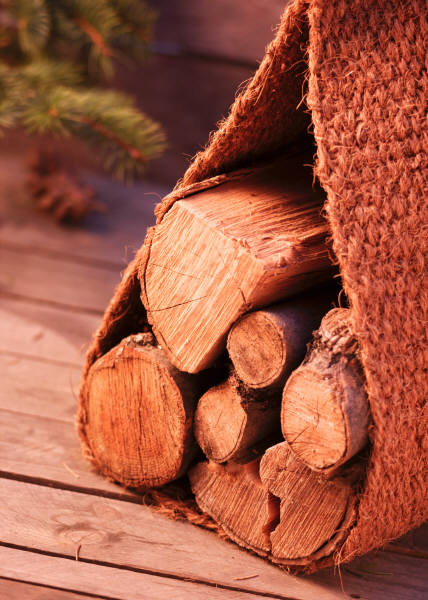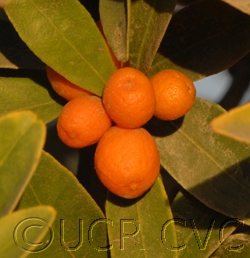
Posts Tagged: invasive species
UCCE Ventura Celebrates 100 Years of UC Cooperative Extension Service

The University of California, Agriculture and Natural Resources (UC ANR) division is celebrating 100 years of service and science to the state of California. In May 2014 UC ANR will mark the 100th anniversary of the Smith-Lever Act, legislation that created Cooperative Extension, a nationwide system of community-based education, established as part of each state's land grant university.
The Ventura County UC Cooperative Extension is our local component of this structure where we serve the community through youth development programs, agricultural outreach and research, home gardening programs, natural resource education and projects, environmental horticultural and landscape expertise. We also work in conjunction with the Hansen Agriculture UC Research and Extension Center (REC) in Santa Paula where agricultural research projects and educational outreach programs are conducted in a dedicated agricultural setting.
Join us at our 100th anniversary celebratory meeting in Oxnard and learn more about the extension and research activities.
Date: January 29, 2014
Time: 8:00 am to Noon
Location:
Courtyard by Marriott
600 E. Esplande Dr.
Oxnard
RSVP by January 20, 2014 to 805-525-3839, ext. 214 or sbmiller@ucanr.edu or respond online.
Click here for more information and the agenda.
Buy It Where You Burn It, the Sequel

Firewood borne diseases and pests can cause devastating damage to trees and huge financial losses to growers and the agricultural community. The simple yet important act of keeping firewood purchases local and not transporting to public areas can help prevent invasive pests such as the Asian Citrus Psyllid (ACP), gold spotted oak borer, emerald ash borer and others from gaining a foothold in your community.
For more useful information about this important effort, visit the California Firewood Task Force website. The Farm Bureau Pest Issues webpage has a list of invasive pests and diseases that could threaten Ventura County. Also check out a special presentation on ACP at the UCCE ACP Workshop webpage.
UC’s Spanish News and Information Service wesite
UC ANR’s Spanish News Service website brings Agriculture and Natural Resource information to California residents who are fluent, and more comfortable learning, in Spanish. This is a vital service for all Californians as many of the issues and challenges we face together can only be solved by all of us working together.
This highly organized, visually appealing, and easy to navigate site provides a great deal of information on many important topics. The information can be accessed by audio, video, articles, and blogs.
Topics include:
- Invasive species
- Water quality
- Nutrition and fitness
- Child development
- Preventing obesity and overweight
- Reducing the risk of diabetes
- Natural resources
- Recovering from a natural disaster
- Integrated Pest Management (IPM)
- Preventing and recovering from wildfires
- Money management
- Gardening
- And much more
A similar site is available in English.
Asian Citrus Psyllid host plants
Asian citrus psyllid, has not recently received much attention in the news media. However the pest, and the deadly bacterial disease it can carry, are still of great concern.
The Asian citrus psyllid (ACP) has now been found in eight California counties. Quarantines are in place. The psyllid by itself is not much of a problem; it is its ability to spread the fatal disease that has the potential to devastate both the California citrus industry and backyard citrus throughout the state.
Huanglongbing (HLB) is the name of the disease ACP can carry. Citrus and closely related plants are at risk. The disease is transmitted between plants by the psyllid. The psyllids transmit the disease to healthy plants and trees. After feeding on an infected plant, the ACP will transmit HLB to every other plant it feeds on.
While much outreach has focused on citrus trees, it is important to remember there are other plants that can host both ACP and HLB. This list from the University of Florida provides both the common and Latin plant name for many known hosts. Hosts include: curry leaf, ornamental orange-jasmine, and all the varieties of citrus, including kumquat, mandarin, grapefruit, orange and all of their hybrids.
Please remember to check your citrus and closely related plants regularly for signs of ACP or HLB. General information about this pest disease complex can be found on this section of the CDFA website. For local updates, the Ventura County ACP Task Force is a great source of information.
Buy it where you burn it
As the season for outdoor activities and gatherings gets into full swing, we would like to remind you to burn only local wood at campfires and cookouts.
Why is burning only local wood important? Several destructive invasive pests attack trees and continue to inhabit the wood after the tree has died. When and if an infested tree is cut up and used for firewood the pests go along for the ride and broaden their range. The pests can be extremely small and invisible to the naked eye.
These pests include:
- The Red Bay Ambrosia beetle (RBA). This tiny insect and the fungus it carries can kill a healthy avocado tree in six months or less. Laurel Wilt Disease caused by the fungus carried by RBA is already established in the South Eastern portion of our country and is expected to travel to our state. RBA has the potential to devastate our avocado industry along with backyard trees.
- The Gold Spotted Oak Borer (GSOB) is already in our state and is responsible for killing tens of thousands of oak trees. The loss of oak trees, especially in the wild brings many negative impacts: loss of wildlife habitat, greater risk of erosion and catastrophic fire, invasion of noxious weeds, as well as safety risks related to falling trees or branches. Additional information about GSOB can be found at this website.
- The Tea Shot Hole Borer is also in California, but to date there have been no reports of the potentially deadly fungal damage it can spread. The Tea Shot Hole Borer is also a serious pest of avocado trees. Other hosts include: castor bean plant, black locust, lychee, and acer.
Please do what you can to minimize the spread of these destructive invasive species. Remember when it comes to firewood -- buy it where you burn it!



